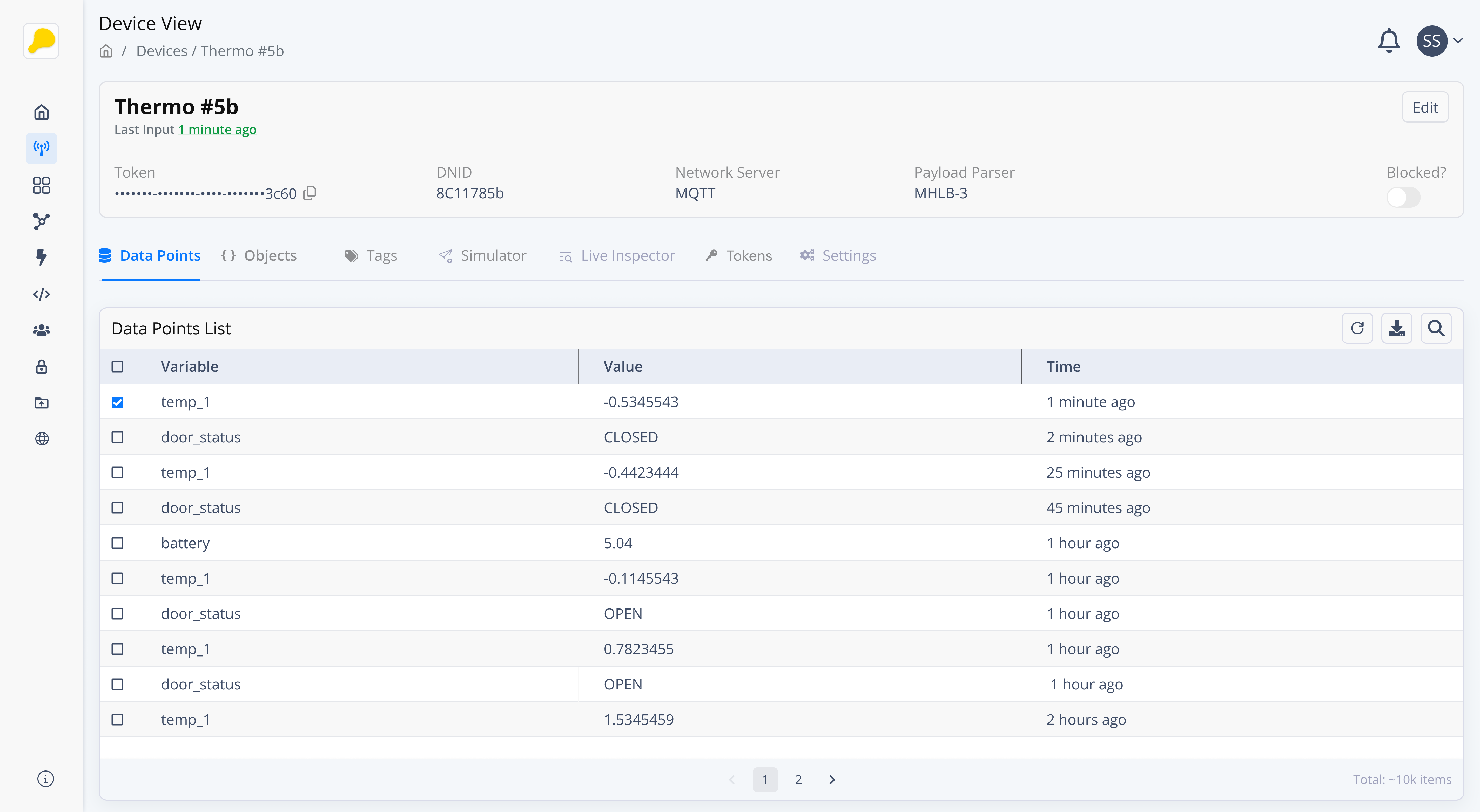Device
Overview
The Device represent the physical or virtual components that connect to the platform to send and receive data. These Devices can include examples such sensors, actuators, gateways, controllers, API endpoint, or pratically any thing that sends data. Each Device is uniquely identified and can be managed individually or through a Network. Devices are the core components of your IoT ecosystem, enabling you to collect, monitor, and control data in real-time.

Key Characteristics
- Data Transmission: Devices can send and receive data using supported protocols such as
HTTPSandMQTTby default, as well asother protocolsusing a middleware. - Data Storage: Devices can store
historical datagenerated by your physical or virtual components (Datapoints). They can also storestructured data(Objects). - Tags: Devices can be labeled with tags for easy categorization and filtering. Tags help you to
manageandgroupdevices based on attributes like location, type, or functionality, simplifying management and operations.
Use Cases
- Time-Series Data Storage: Seamlessly connect with any IoT device to collect and store time-series data, enabling historical analysis and trend monitoring.
- Data Integration: Integrate with APIs or external data sources to gather and centralize data, ensuring a unified platform for all your data collection needs.
Device Creation
To have access to the Devices page, go to the Valeiot Console, click on Devices in the left side bar. Then add a new Device, clicking on the "+" icon on the top right of the table and follow the steps below:
Step 1: Select a Network
A Network provide access to the Devices within it. Using the Network Token, you can send data to a specific Device.
The Network DOES NOT determine the communication protocol. The Devices have HTTPS and MQTT access by default. If you need to integrate with a different communication protocol, you will need middleware. Check how to properly integrate your Devices here.
Step 2: Select a Payload Parser
Use a Payload Parser to decode incoming device data (optional). Devices—such as sensors, APIs, or other hardware—may send data in a compressed or custom format. This module helps decode and convert the data to the Valeiot datapoint pattern. If your device is not listed in the Payload Parser, you can create a your own parser.
Step 3: Set the Device Details
In this step you can set the information to be displayed on the Device. That is:
- Name: Device's name.
- DNID: The DNID (Device Network Identification) is a unique ID used by the Network to identify the Device. You can use the EUI, ID, or Serial Number as the DNID.
- Retention Time: The time period wich the device will retain the datapoints.
Now review all entered details for accuracy and ensure there are no duplicates or errors in the DNID.
Sending Data
To learn how to send data to your Device, check out the section Sending Data.